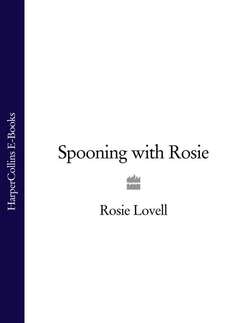Читать книгу Spooning with Rosie - Rosie Lovell - Страница 35
ОглавлениеLemon Tart
For 2 with leftovers
My first experience with a serious lemon tart was in Toulouse on a mini-break. The boy in question and I had just shared a sturdy cassoulet by the cathedral, and were walking through the back streets when we stumbled on a beautiful teashop. This idyll was a heavenly Alice in Wonderland boudoir, with cakes piled high on tiered stands, and chic, sleek, gossiping French women. My eyes were on stalks and we shared the most delicious lemon tart. So delicious that it famously caused a stir in his trousers and it has been our joke ever since.
Here is my re-creation. It’s something to do with the contrast of the sweet pastry and sharp custard that does it, making your jaw ache with longing for more and more citrus custard. And it being a classic pudding means that pretty much anyone you are entertaining will fancy a slice. This sunny tart goes down a treat at Rosie’s because it’s just so perfectly tangy.
The Pastry
100g plain flour, plus extra for rolling
25g caster sugar
50g fridge-cold unsalted butter
1 medium free-range egg yolk (keep the white for meringues)
For the pastry, sift the flour and sugar together into a large bowl, and chop the butter into this. Quickly and with cold dry hands, rub in the fat until it looks like damp breadcrumbs. Separate the egg and throw the yolk into the pastry mix. With a knife, cut through the mixture to combine into a dough ball. You may need a little extra cold water to fully draw it together.
On a floured surface, roll out the pastry to fit a loose-bottomed rectangular flan tin measuring about 8 × 23cm. Sweet pastry, or pâte sucrée, is stickier than the average shortcrust, so make sure you have plenty of flour to hand. Then roll it over the tin and push in the edges, being careful not to split the pastry. Roll the pin over the tart tin to cut off any excess pastry (which you can keep aside for pastry swirls, see 69), and place in the freezer for half an hour.
Meanwhile, heat the oven to 200°C/Gas 6. When the oven is piping hot, and the pastry is really cold, you are ready to blind bake. Line the pastry tin with greased paper or tinfoil, and scatter with baking beans or dried chickpeas. Place in the oven for 10 minutes, or until the edges are beginning to brown. Keep a close eye on it. Remove the baking beans and lining paper and bake for a further couple of minutes to dry out the base. Remove from the oven to cool while you make the lemon custard filling. Keep the oven on, but reduce the temperature to 180°C/Gas 4.
The Lemon Filling
2 lemons
2 medium free-range egg yolks
2 medium free-range eggs
90g sugar (caster or icing sugar)
150ml double cream, plus a little extra for serving if you like
For the lemon custard, grate the lemon zest and combine with the egg yolks and eggs. Sift in the sugar and then add the cream. Lastly mix in the juice of the lemons. Return the pastry case to the oven shelf, and pour the filling in now. That way you can’t spill it over the edge of the pastry case in transit. Bake for about half an hour, or until the top has just stopped wobbling.
